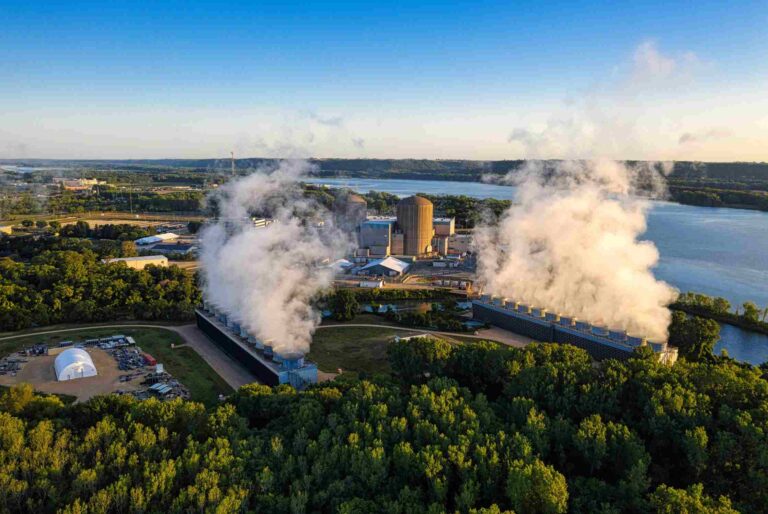Climate engineering, also referred to as geoengineering, encompasses purposeful, extensive interventions within the Earth’s climate system as a countermeasure to climate change. This multifaceted endeavor encompasses methodologies for extracting carbon dioxide from the atmosphere and implementing technologies that expeditiously dissipate the Earth’s heat by redirecting solar energy into space.
Climate manipulation serves as an umbrella term for both carbon dioxide removal (CDR) and solar radiation management (SRM), alternatively known as solar geoengineering, when executed on a planetary magnitude.
Nevertheless, these techniques exhibit distinct geophysical attributes, leading the Intergovernmental Panel on Climate Change (IPCC) to abandon the usage of this comprehensive terminology. Approaches focused on carbon dioxide removal form an integral part of mitigating climate change.
Table of Contents
What are the benefits associated to climate engineering
Climate change engineering, also referred to as geoengineering, encompasses deliberate and extensive interventions to manipulate and transform the Earth’s climate and environment.
The objective is to prevent further climate change, decelerate and reverse global warming, and alleviate the repercussions on our civilization and biosphere. The following are several benefits associated with climate change engineering:
1. Remarkable efficacy
The paramount advantage of employing climate change engineering lies in its exceptional efficacy. Through the implementation of diverse initiatives within this field, it becomes possible to diminish the concentration of greenhouse gases in the atmosphere, thereby safeguarding the long-term well-being of our planet;
2. Active restoration of climate damage
Climate engineering strives to actively restore climate damage. Strategies like curbing emissions, capturing carbon, and managing solar radiation contribute to the reduction of greenhouse gas levels in the atmosphere and the alleviation of climate change effects.
3. Adoption of alternative energy sources
Engineers involved in climate change engineering actively pursue the development and utilization of alternative energy sources, such as geothermal power, solar power, and biomass energy. This endeavor facilitates the reduction of greenhouse gas emissions.
4. Technological feasibility and accessibility
Climate engineering demonstrates both technological feasibility and accessibility. Many methodologies employed in this field are already in practice, including carbon capture and storage.
5. Restoration of global temperatures and carbon dioxide levels
The primary aim of climate engineering is to restore global temperatures and carbon dioxide levels to those experienced in the pre-industrial era, before the widespread use of fossil fuels. This restorative approach serves as a vital milestone in addressing climate change.
6. Mitigation of climate change effects
Climate engineering possesses the potential to mitigate the adverse effects of climate change, including rising sea levels, prolonged droughts, and extreme weather events.
What are the potential drawbacks associated?
Climate change engineering, or geoengineering, presents a bold and innovative approach to combat the repercussions of climate change.
Nonetheless, it is crucial to acknowledge the various limitations associated with this strategy. Climate change engineering has several disadvantages, here are they:
1. Financial implications
Climate change engineering has a prominent downside, which is its substantial cost. The construction and operation of the necessary infrastructure for geoengineering endeavors can be economically burdensome.
2. Energy consumption
Implementing climate change engineering demands a significant amount of energy, which can, paradoxically, contribute to the emission of greenhouse gases and exacerbate the very issue it aims to address.
3. Ecological ramifications
The sudden cessation of geoengineering practices could have catastrophic ecological consequences. For instance, the abrupt termination of solar geoengineering might trigger a rapid escalation of global warming, posing a severe threat to wildlife and leaving numerous species ill-equipped to adapt to the abrupt and drastic environmental shifts.
4. Indirect effects on the environment
While climate engineering may effectively reduce the global average temperature, it has the potential to disrupt local weather patterns and give rise to other indirect environmental impacts.
5. Limited problem-solving scope
It is important to note that geoengineering may not provide comprehensive solutions to all the significant challenges posed by climate change; in fact, it could potentially exacerbate some issues. For instance, while solar geoengineering may counterbalance the heightened risk of tropical cyclones resulting from carbon dioxide emissions, it may not effectively address other pressing concerns such as ocean acidification.
Examples of climate engineering
There are numerous strategies within the realm of climate engineering. These include natural climate solutions, solar radiation management, carbon dioxide removal, and a diverse range of climate mitigation and adaptation methodologies. Presented below are several illustrations of climate engineering techniques:
- Solar radiation management: This method entails the reflection of sunlight back into space to diminish the amount of solar radiation that reaches the Earth’s surface. One viable approach involves the injection of reflective particles into the upper atmosphere;
- Carbon dioxide removal: This approach involves extracting carbon dioxide from the atmosphere. It aims to reduce the quantity of greenhouse gases contributing to global warming. A method to achieve this objective is the augmentation of tree populations with afforestation, as trees absorb carbon dioxide during the process of photosynthesis;
- Ocean fertilization: This strategy involves adding nutrients to the ocean. The purpose is to stimulate the growth of phytoplankton, which absorb carbon dioxide through photosynthesis. However, it is important to note that this approach is contentious due to potential adverse impacts on marine ecosystems;
- Cloud brightening: This technique focuses on enhancing clouds’ reflectivity to increase the amount of sunlight they reflect back into space. One means of accomplishing this is by dispersing seawater into the atmosphere to generate more reflective cloud formations.
Read also: Modifying the weather: what is cloud seeding and what are its effects
What is the debate surrounding climate change engineering
Perspectives from the scientific community opinions within the scientific community diverge when it comes to climate change engineering. Some assert that it offers a necessary and viable avenue to combat the pressing challenge of climate change, given its urgency and magnitude.
Conversely, others raise concerns about the uncertainties and risks associated with large-scale interventions, highlighting the significance of prioritizing emission reductions and sustainable practices.
The feasibility of climate change engineering is intricately linked to public perception and acceptance. Engaging in open and inclusive dialogues and fostering transparency are pivotal factors.
To regulate and steer climate change engineering endeavors, it becomes imperative to develop policy frameworks and international governance mechanisms. The establishment of robust governance structures should accord priority to scientific research, risk assessments, and meaningful public engagement. Policies must be crafted to ensure responsible and ethically sound implementation of its strategies. This requires striking a delicate balance between potential benefits and drawbacks.
Read also: Clean, unlimited and uninterrupted energy from the air: it is now reality












